Burkett, V. S., Cummins, J. M., Dickson, R. M., & Skolnick, M. (2005). An open clinical trial utilizing real-time EEG operant conditioning as an adjunctive therapy in the treatment of crack cocaine dependence. Journal of Neurotherapy, 9(2), 27–48.
Callaway, T.G, Bodenhamer-Davis, E. (2008). Long-term follow-up of a clinical replication of the Peniston Protocol for chemical dependency. Journal of Neurotherapy, 12(4), 243–259.
deBeus, R. J. (2007). Quantitative electroencephalography-guided versus Scott/Peniston neurofeedback with substance abuse outpatients: A pilot study. Biofeedback, 35(4), 146–151.
Fahrion, S. L., Walters, E. D., Coyne, L., & Allen, T. (1992). Alterations in EEG amplitude, personality factors and brain electrical mapping after alpha theta brainwave training: A controlled case study of an alcoholic in recovery. Alcoholism: Clinical & Experimental Research, 16, 547–552.
Fahrion, S. L. (1995). Human potential and personal transformation. Subtle Energies, 6, 55–88.
Goldberg, R. J., et al. (1976). Alpha conditioning as an adjunct treatment for drug dependence: Part I. International Journal of Addiction, 11, 1085–1089.
Goldberg, R. J., et al. (1977). Alpha conditioning as an adjunct treatment for drug dependence: Part II. International Journal of Addiction, 12, 195–204.
Horrell, T., El-Baz, A., Baruth, J., Tasman, A., Sokhadze, G., Stewart, C., Sokhadze, E. (2010). Neurofeedback effects on evoked and induced EEG gamma band reactivity to drug-related cues in cocaine addiction. Journal of Neurotherapy, 14(3), 195–216.
Kelly, M. J. (1997). Native Americans, neurofeedback, and substance abuse theory: Three year outcome of alpha/theta neurofeedback training in the treatment of problem drinking among Dine= (Navajo) people. Journal of Neurotherapy, 2(3), 24–60.
Lamontague, Y., Hand, I., Annable, L., et al. (1975). Physiological and psychological effects of alpha and EMG feedback training with college drug users: A pilot study. Canadian Psychiatric Association Journal, 20, 337–349.
Leong, S. L., Ridder, D. de, Vanneste, S., Ross, S., Sutherland, W., & Manning, P. (2017). Effect of transcranial pink noise stimulation of anterior cingulate cortex on food craving. Brain Stimulation: Basic, Translational, and Clinical Research in Neuromodulation, 10(2), 351. https://doi.org/10.1016/j.brs.2017.01.028
Passini, F., Watson, C. G., Dehnel, L., Herder, J., & Watkins, B. (1977). Alpha wave biofeedback training therapy in alcoholics. Journal of Clinical Psychology, 33(1), 292299.
Peniston, E. G., & Kulkosky, P. J. (1989). Alpha-theta brainwave training and beta-endorphin levels in alcoholics. Alcohol: Clinical & Experimental Research, 13(2), 271279.
Peniston, E. G., & Kulkosky, P. J. (1991). Alcoholic personality and alpha-theta brainwave training. Medical Psychotherapy, 2, 37–55.
Peniston, E. G., Marrinan, D. A., Deming, W. A., & Kulkosky, P. J. (1993). EEG alpha-theta brainwave synchronization in Vietnam theater veterans with combat-related post-traumatic stress disorder and alcohol abuse. Advances in Medical Psychotherapy, 6, 37–50.
Saxby, E., & Peniston, E. G. (1995). Alpha-theta brainwave neurofeedback training: An effective treatment for male and female alcoholics with depressive symptoms. Journal of Clinical Psychology, 51(5), 685–693.
Schneider, F., Elbert, T., Heimann, H., Welker, A., Stetter, F., Mattes, R., Birbaumer, N., & Mann, K. (1993). Self-regulation of slow cortical potentials in psychiatric patients: Alcohol dependency. Biofeedback & Self-Regulation, 18, 23–32.
Scott, W., & Kaiser, D. (1998). Augmenting chemical dependency treatment with neurofeedback training. Journal of Neurotherapy, 3(1), 66.
Scott, W. C., Kaiser, D., Othmer, S., Sideroff, S. I. (2005) Effects of an EEG Biofeedback Protocol on a Mixed Substance Abusing Population. American Journal of Drug and Alcohol Abuse, 31(3), 455-469
Sokhadze, E., Stewart, C., Hollifield, M., Tasman, A. (2008). Event-related potential study of executive dysfunctions in a speeded reaction task in cocaine addiction. Journal of Neurotherapy, 12(4), 185–204.
Sokhadze, E., Singh, S., Stewart, C., Hollifield, M., El-Baz, A., Tasman, A. (2008). Attentional bias to drug-and stress-related pictorial cues in cocaine addiction comorbid with Posttraumatic Stress Disorder. Journal of Neurotherapy, 12(4), 205–225.
Sokhadze, E. M., Cannon R. L., & Trudeau D. L. (2008) EEG biofeedback as a treatment for Substance Use Disorders: review, rating of efficacy, and recommendations for further research. Journal of Neurotherapy, 12(1), 5–43.
Sokhadze, T. M., Stewart, C. M., & Hollifield, M. (2007). Integrating cognitive neuroscience and cognitive behavioral treatment with neurofeedback therapy in drug addiction comorbid with posttraumatic stress disorder: A conceptual review. Journal of Neurotherapy, 11(2), 13–44.
Sokhadze, T. M., Cannon, R. L., & Trudeau, D. L. (2008). EEG biofeedback as a treatment for substance use disorders: Review, rating of efficacy, and recommendations for further research. Applied Psychophysiology & Biofeedback, 33(1), 1–28.
Trudeau, D. L. (2008) Brainwave biofeedback for addictive disorder. Journal of Neurotherapy, 12(4), 181–183.
Trudeau, D. L. (2005). Applicability of brain wave biofeedback to substance use disorder in adolescents. Child & Adolescent Psychiatric Clinics of North America, 14(1), 125136.
Trudeau, D. L. (2000). The treatment of addictive disorders by brain wave biofeedback: A review and suggestions for future research. Clinical Electroencephalography, 31(1), 1322.
Watson, C. G., Herder, J., & Passini, F. T. (1978). Alpha biofeedback therapy in alcoholics: An 18-month follow-up. Journal of Clinical Psychology, 34(3), 765–769.

